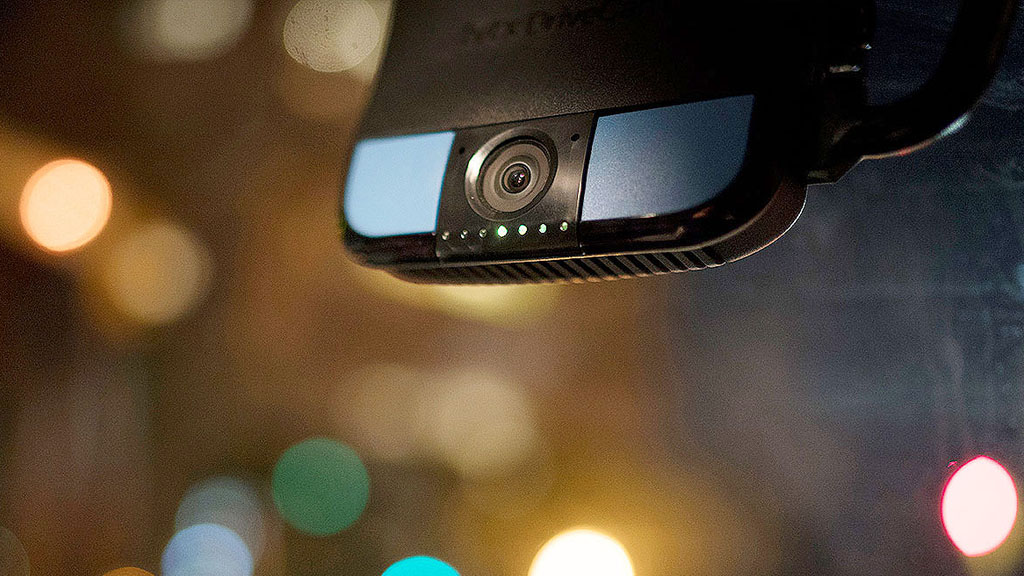October 7, 2021
Welcome to our Monday Minute Interview Series
In this series, Christopher Candy, VP, Business Development at Mobilizz™ sits down with the people and businesses of the Telematics industry. This week we caught up with:
Jeff Engle

Based in Minneapolis, MN, is the Geotab Channel Development Director at Lytx Inc. Jeff has over 10 years of experience working in telematics, SaaS and IoT in areas such as connected transportation, mobile workforce applications and product development.
Lytx

A San Diego, California based technology company, is a leading provider of machine vision and artificial intelligence-powered video telematics, analytics, safety, and productivity solutions for commercial, public sector, and field service fleets.
Can you give us a little intro on Lytx?
Lytx was originally founded in 1998 as DriveCam. We provide dash camera products and services to over 700,000 devices across 4,000 fleets, accounting for 60% of the dash camera market share globally. Lytx has a market value of over $2 billion USD and a staff of over 600.
What we do is harness the power of video and data to enable fleets to improve safety, efficiency, and productivity.

What is “video telematics”
Lytx considers video telematics to be this: begin with cloud connected cameras and sensors, then combine video data, machine vision technology and vehicle data to deliver more insights than traditional telematics can offer. This combination provides a critical context and a full picture of what is happening with in-field fleets, allowing you to take an effective action plan.
What separates Lytx from the competition?
The competition in the video space is fierce. We are known globally as the premier video safety solution in the market. Over 20 years of experience and innovation in the video safety space combined with our scale translates into the largest database of aggregated video and driving data. This allows us to deliver the most accurate and reliable solution to the market.
We also have offered a human-review option for 12 years, which is longer than most of the competition has been in business.
This gives us millions of minutes of driver behaviour-specific data that helps our customers implement effective change.
Lytx is integrated with Geotab, but can you elaborate on the partnership and what that means?
We were the premier sponsor at Geotab Connect in San Diego this past January 2020. The market is asking for converged video and traditional telematics solutions. They want to combine video data with vehicle data – who was there, what were they doing – and bring it all together into one solution.
This strategic partnership integrates the best telematics [Geotab] and best video [Lytx] platform available on the market into one seamless integrated platform solution.
It provides the customer using Lytx and Geotab the opportunity to have a Single Sign-On experience, and the ability to view all video within the MyGeotab map.

What are some typical hesitancies to installing a dash camera in fleet vehicles? What are your answers to those?
There are certainly hesitancies about installing a dashcam into vehicles. There can be a lot of anxiety from drivers about their employer spying on them. Reality is, no one has all the time to sit there and watch endless video of nothing going on.
We believe in complete transparency between employer and employee. With that foundation, installing Lytx is a positive measure to protect the driver from false claims such as dangerous or harmful driving, and ultimately make the roads safer.
Think about it in the context of a Professional athlete. After a big game, they review video of their performance and identify opportunities to better themselves.
This is the exact same concept – creating better, safer drivers.
How easy is it to get started with Lytx?
Getting started with Lytx is very simple. We offer several solutions and configurations to meet a customer’s specific needs. Once the specific solution is agreed upon, an installation call is scheduled. We offer a White Glove installation, portal setup, ongoing training and either weekly or monthly calls to share best practices.
We want to make sure our customers are successful – Lytx has a 97% customer retention because we constantly help our customers along the way.
A company installs Lytx and starts to collect all of this data and video. How can a fleet stay on top of it all without getting overwhelmed?
That is the million-dollar question. Over our two decades of being in business, we have identified various stages of a customer’s desired involvement. Some want the most basic solution, and some want the most robust solution – that’s to say that they want to have Lytx do everything.
The most robust solution includes full coaching workflow, dashboards and deep reporting.
Some of our clients have fleet sizes greater than 500 vehicles and spend less than 15 minutes per day managing the solution!
This is due to the fact that Lytx can do all of the heavy lifting and produce all of the necessary documentation to make effective behavioural change.
How do you go from video telematics findings (i.e. a driver constantly tailgates) to training and instilling actual change?
The Lytx solution will identify risky driving behaviours. When we identify that behaviour, we produce a video clip of that event. The event is then processed through our coaching workflow and presented as a coaching opportunity.
The coach and the driver can then review the event together or independently and add additional context about the event. The driver scorecards within the system will then reflect both the event and coaching with a trend report. This trend report indicates if the behaviour is continuing or improving.

What are some trends you are seeing in the fleet industry?
Some of the trends we are seeing is the request for convergence – to have a single integrated solution (telematics, video, maintenance etc) under a single pane of glass.
Machine Vision, Machine Learning and Artificial Intelligence are also hot topics. Accuracy and reliability are the most important thing.
Where is video telematics heading in the next 5 years?
Video telematics is going to be a very critical piece of fleet management over the next 5 years. With commercial insurance premiums going up and claims skyrocketing, insurance providers are increasingly asking their clients to add a video safety platform to their fleet.
I see it becoming as common place as telematics is now.
Will OEM’s start installing cameras like they now are with telematics?
Short answer is, eventually yes, but not soon. The automotive OEM development is typically years behind 3rd party solutions. The cameras will eventually get there with the OEM’s and then it will be a pure software solution. The quality of the solution will be dependant on integration capabilities and the dataset the provider can offer.

